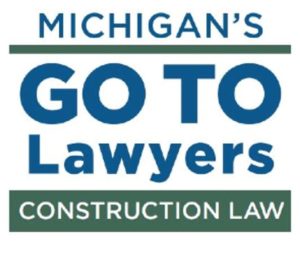(September 22, 2016) Ordinary medical malpractice suits must be commenced within two years of the event at issue or six months after the plaintiff discovers or should have discovered the claim. In Jendrusina v. Mishra, the Court of Appeals defines in 2-1 newly published decision that when a plaintiff “should have discovered a claim” in a medical malpractice case rests on when a reasonable person with no medical training would have recognized there was a possible claim.
In Jendrusina, the plaintiff’s primary care physician had been following his creatinine (chemical waste product produced by the kidneys) levels since 2007. In 2008, the plaintiff’s creatinine levels worsened to such an extent that the primary care physician diagnosed him with “chronic renal failure.” Plaintiff testified he was never told of this diagnosis. In 2009, the doctor had an ultrasound of the kidneys performed. Plaintiff testified he was told by his physician that the test and labs were fine. However, in 2011, he was informed by ER physicians he had irreversible kidney failure. In September 2012, he was told by a treating nephrologist dialysis treatments could have been avoided had his primary care physician sent him to a nephrologist earlier. Plaintiff filed suit in 2013, within six months of his meeting the nephrologist. The trial court dismissed plaintiff’s suit, finding the complaint should have been filed between six months from the 2011 emergency room visit when he was diagnosed with chronic kidney failure, despite his primary care physician’s assurances that his kidneys were fine.
The Jendrusina Court held the six month discovery rule looks to when Plaintiff “should have” rather than “could have” known a possible cause of action existed against his primary care physician. The majority explained that a reasonable lay person would have little knowledge about the kidneys and their function; let alone what an abnormal creatinine level was or how quickly kidneys can fail. The Court found it was not until the treating nephrologist actually told plaintiff the primary care physician should have referred him earlier and things were not “fine” on earlier tests that he could have known about a possible claim against the internist. Accordingly, it reversed the trial court’s dismissal of the case.
However, there was disagreement among the appellate judges. The dissenting judge noted the majority overreached in its analysis in suggesting plaintiff would not have known enough about kidney disease to know if a claim existed. She found plaintiff had more than enough information to know a possible claim existed when he was told in the emergency room in 2011 that he had irreversible kidney failure at the same time he was being told by his physician that the kidneys were fine. The dissent wrote the standard does not allow a plaintiff to sit back and wait until others inform him of a claim’s existence. The dissenting judge noted:
Plaintiff’s kidney failure was not a sudden event disconnected to his previous medical diagnoses and treatment. Instead, plaintiff was aware [the doctor] was monitoring his kidneys and that he had elevated levels, and he knew [the doctor] performed an ultrasound specifically to ensure there was not issue with the kidneys. Therefore, plaintiff should have known of a possible cause of action when he learned that he had kidney failure in January 2011.
One can assume that the majority’s decision in Jendrusina will be appealed to the Supreme Court. We will have to wait and see whether the high court agrees with the majority. In the meantime, the Court of Appeal’s opinion is binding on the lower courts and can be used to expand the six month discovery rule to cover just about any situation within the six year statute of repose. Plaintiffs will seek to establish that given the fact the reasonable person has no understanding of medical anatomy, terminology or physiology, they could not have discovered the existence of a possible claim until it was spelled out for them by a medical professional. The Rhoades McKee Medical Malpractice team continues to follow this case to see whether this expansion of the six month discovery rule stands up to the scrutiny of the Supreme Court.
More Publications



